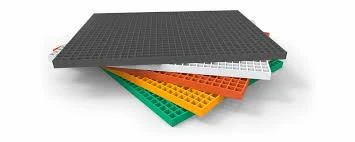
-
 Afrikaans
Afrikaans -
 Albanian
Albanian -
 Amharic
Amharic -
 Arabic
Arabic -
 Armenian
Armenian -
 Azerbaijani
Azerbaijani -
 Basque
Basque -
 Belarusian
Belarusian -
 Bengali
Bengali -
 Bosnian
Bosnian -
 Bulgarian
Bulgarian -
 Catalan
Catalan -
 Cebuano
Cebuano -
 China
China -
 China (Taiwan)
China (Taiwan) -
 Corsican
Corsican -
 Croatian
Croatian -
 Czech
Czech -
 Danish
Danish -
 Dutch
Dutch -
 English
English -
 Esperanto
Esperanto -
 Estonian
Estonian -
 Finnish
Finnish -
 French
French -
 Frisian
Frisian -
 Galician
Galician -
 Georgian
Georgian -
 German
German -
 Greek
Greek -
 Gujarati
Gujarati -
 Haitian Creole
Haitian Creole -
 hausa
hausa -
 hawaiian
hawaiian -
 Hebrew
Hebrew -
 Hindi
Hindi -
 Miao
Miao -
 Hungarian
Hungarian -
 Icelandic
Icelandic -
 igbo
igbo -
 Indonesian
Indonesian -
 irish
irish -
 Italian
Italian -
 Japanese
Japanese -
 Javanese
Javanese -
 Kannada
Kannada -
 kazakh
kazakh -
 Khmer
Khmer -
 Rwandese
Rwandese -
 Korean
Korean -
 Kurdish
Kurdish -
 Kyrgyz
Kyrgyz -
 Lao
Lao -
 Latin
Latin -
 Latvian
Latvian -
 Lithuanian
Lithuanian -
 Luxembourgish
Luxembourgish -
 Macedonian
Macedonian -
 Malgashi
Malgashi -
 Malay
Malay -
 Malayalam
Malayalam -
 Maltese
Maltese -
 Maori
Maori -
 Marathi
Marathi -
 Mongolian
Mongolian -
 Myanmar
Myanmar -
 Nepali
Nepali -
 Norwegian
Norwegian -
 Norwegian
Norwegian -
 Occitan
Occitan -
 Pashto
Pashto -
 Persian
Persian -
 Polish
Polish -
 Portuguese
Portuguese -
 Punjabi
Punjabi -
 Romanian
Romanian -
 Russian
Russian -
 Samoan
Samoan -
 Scottish Gaelic
Scottish Gaelic -
 Serbian
Serbian -
 Sesotho
Sesotho -
 Shona
Shona -
 Sindhi
Sindhi -
 Sinhala
Sinhala -
 Slovak
Slovak -
 Slovenian
Slovenian -
 Somali
Somali -
 Spanish
Spanish -
 Sundanese
Sundanese -
 Swahili
Swahili -
 Swedish
Swedish -
 Tagalog
Tagalog -
 Tajik
Tajik -
 Tamil
Tamil -
 Tatar
Tatar -
 Telugu
Telugu -
 Thai
Thai -
 Turkish
Turkish -
 Turkmen
Turkmen -
 Ukrainian
Ukrainian -
 Urdu
Urdu -
 Uighur
Uighur -
 Uzbek
Uzbek -
 Vietnamese
Vietnamese -
 Welsh
Welsh -
 Bantu
Bantu -
 Yiddish
Yiddish -
 Yoruba
Yoruba -
 Zulu
Zulu
frp valve
Understanding FRP Valves A Comprehensive Overview
FRP (Fiber Reinforced Plastic) valves are increasingly becoming the go-to choice in various industrial applications due to their outstanding properties. These valves are engineered from a composite material that combines plastic with fiber reinforcements, typically glass or carbon fibers. This unique composition gives FRP valves remarkable strength while keeping them lightweight, making them ideal for a range of settings, particularly in environments where corrosion and high-stress conditions are a concern.
Understanding FRP Valves A Comprehensive Overview
Moreover, FRP valves are highly customizable. They can be manufactured in various shapes, sizes, and pressure ratings to meet specific operational requirements. This versatility means they can be used in diverse industries, including water treatment, chemical processing, food production, and even oil and gas. Their ability to withstand extreme temperatures and pressures adds to their appeal, as they can handle a wide range of operational scenarios.
frp valve

In addition to their physical properties, FRP valves are also noted for their ease of installation and lightweight nature. Compared to their metal counterparts, FRP valves are significantly easier to transport and install, which can lead to reduced labor costs and shorter project timelines. Furthermore, FRP materials are non-conductive, which can be an essential feature in applications where electrical isolation is necessary.
However, it is important to consider some limitations of FRP valves. They may not be suitable for high-temperature applications beyond certain thresholds, and their use in high-pressure scenarios is often contingent on the specific design and material of the valve. Additionally, the initial cost of FRP valves might be higher than traditional options, but this is typically offset by their long-term savings in maintenance and durability.
In conclusion, FRP valves represent a significant advancement in valve technology, offering myriad benefits such as corrosion resistance, lightweight design, and customizability. As industries continue to seek efficient and durable solutions, the demand for FRP valves is expected to rise, solidifying their place as a critical component in modern industrial applications. For companies looking to enhance their operations, investing in FRP valves could prove to be a pivotal step in achieving greater efficiency and reliability.









